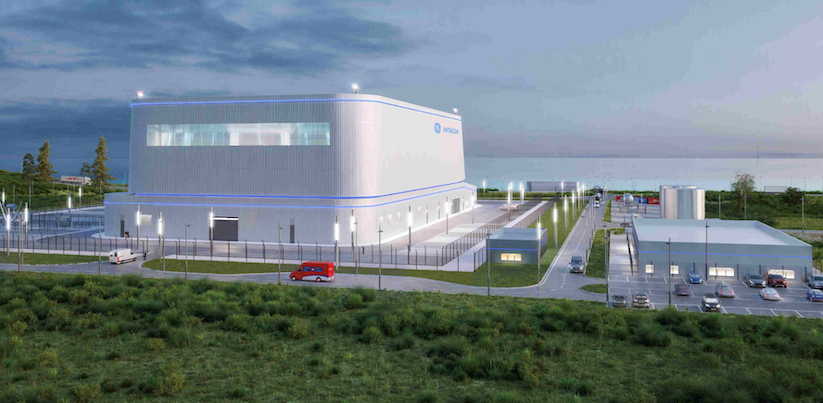Saskatchewan and Ontario have each chosen GE-Hitachi as the supplier of small modular nuclear reactors (SMRs), which could be deployed in the Prairie province by the 2030s and in Ontario by 2028.
“The GE-Hitachi BWRX-300 is a 300 MWe water-cooled, natural circulation Small Modular Reactor (SMR) with passive safety systems,” according to the manufacturer.
“As the tenth evolution of the Boiling Water Reactor (BWR), the BWRX-300 represents the simplest, yet most innovative BWR design since GE began developing nuclear reactors in 1955,” the company states.
The powerful little reactors are carbon-free and emit no greenhouse gas emissions.
Following a thorough assessment of several SMR technologies, SaskPower selected the GE-Hitachi BWRX-300 for potential deployment in Saskatchewan in the mid-2030s, according to Don Morgan, Minister responsible for SaskPower.
“This is an important milestone as Saskatchewan works towards a cleaner, more sustainable future,” said Don Morgan, Minister responsible for SaskPower. “Today’s announcement further acts on the Saskatchewan Growth Plan goal of advancing potential development of zero-emission small modular reactor technology.”
Each of the 300 MWe SMRs cost between $1 billion to $1.5 billion and can provide enough electricity to power approximately 240,000 homes.
Comparative cost
As a comparison with other non-emission options, BC Hydro’s 1,100 Mwe Site C dam is expected to cost $16 billion. A 300MW-solar power farm would require approximately 750,000 solar panels and cost approximately $300 million, provided the approximately 1,500 acres of land needed was free and the sun shone steadily, based on data from the Solar Energy Industries Association.
The typical wind turbine delivers an optimal 2-3 MW in power, and cost from $2 million to $4 million, so 300 MW would require at least 100 turbines at a total cost of between $200 million to $400 million. But land-based wind turbine, dependant on wind conditions, only run at about 40 per cent potential capacity, according to industry data,
SaskPower’s non-emission power assessment focused on several key factors including safety, technology readiness, generation size, fuel type and expected cost of electricity.
The selection of the GEH models follows an independent and comprehensive assessment process that also included close collaboration with Ontario Power Generation (OPG) and a review by Calian, an independent engineering firm with extensive experience in Canada’s nuclear industry.
“We are excited that SaskPower has chosen our technology as it looks to SMRs for the generation of carbon-free electricity,” said Jay Wineman, President & CEO, GEH. “We believe the BWRX-300 is an ideal solution for SaskPower and customers that want to make an impact on climate change and energy security in a meaningful timeframe.”
Interim President and CEO at SaskPower, Troy King, added “We are committed to reducing our greenhouse gas emissions while providing safe, reliable, and sustainable power for our customers. GE-Hitachi’s SMR technology could play a powerful role in this future.”
OPG has announced it will work with GE Hitachi Nuclear Energy to deploy Ontario’s Small Modular Reactor (SMR) at the Darlington new nuclear site, the only site in Canada currently licensed for a new nuclear build.
GEH and Ontario plan to construct up to four 300 MWe small module reactors, with the first coming online by 2028. If built out to this level, the project at $4,000 per Kw, would have an estimated cost at completion of all four units of $4.8 billion. Such an array would provide enough power to fuel approximately 960,000 Ontario homes each year, potentially for generations.



